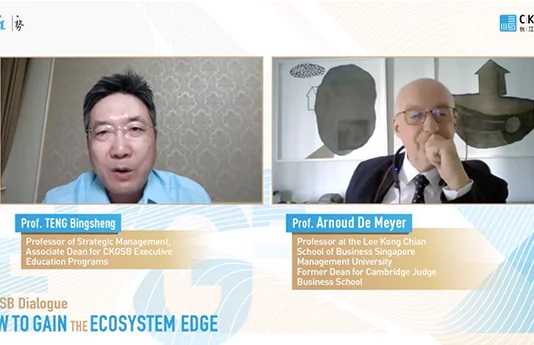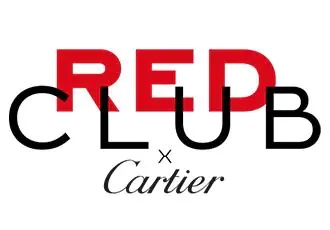This is the third article in our five-part Shine and Rise series. Written by Bennett Voyles, Shine and Rise explores how today’s companies can stand out in a competitive marketplace, differentiate their products and build a high-value company. He offers insights about different industries, provides real-life examples and offers practical suggestions. The previous one is about product differentiation.
How should a company increase the value of its products and services through building a brand identity?
These days, corporate value is based not only on what you sell, but who you are: in a 2016 global study by Edelman, the global public relations firm, 48% of consumers said they won’t buy from a company they distrust but 37% said they will pay more for a product from a company they do trust.
This consumer preoccupation with integrity means that even business-to-business (B2B) companies must concern themselves more than ever with their reputation. Faced with unrelenting scrutiny by regulators and activists, major companies now monitor and inspect their entire supply chain to ensure every subcontractor meets high ethical and ecological standards.
Of course, this risk is also an opportunity: in a world of nearly identical products, being good in a visible way can provide a competitive advantage that may not be easy to replicate.
Unfortunately, becoming one of these admired companies is not easy. Experts say those reputational halos don’t appear by magic after a certain period of behaving honorably and doing good works. Instead, they require a lot of shaping and polishing.
Building a brand identity that inspires trust seems to have at least three facets. First, the company needs a strong sense of what is unique in its value proposition. Second, it needs a culture uniquely suited to fulfilling that proposition. Third, it needs a clear social purpose.
Finding the Value
The struggle to become an exceptional company begins with an assessment of the company’s current strengths.
“The battle begins internally,” explains Stephan Liozu, author of several books on pricing strategy and founder of Value Inorruption Advisors, a Pittsburgh management consulting firm.
Often, B2B companies in particular have been so beaten down by buyers that they have a hard time seeing themselves as anything but a commodity supplier, according to Liozu. However, he argues that this opinion is seldom truly justified. In fact, the company often doesn’t see what makes it special.
Liozu likes to hold multiple workshops that bring people who work in different parts of the organization as well as its customers. He says executives often find the results surprising—and encouraging. “It’s amazing—it opens people’s eyes to the fact that ‘people really do like us,’” he says.
The news tends to be particularly surprising to the executive suite, according to Liozu. Typically, he says, “salespeople have a realistic opinion, marketing has a more exuberant opinion, and top management has a misaligned opinion.’’
Next, Liozu says, he speaks to more customers to validate the view of the company he gathered in his first round of workshops. His goal, he says, is to develop an even stronger sense of how people see the company, knowledge that it can then build on in its sales and marketing.
Listening well to various stakeholders, particularly the customer, is an important part of building a stronger identity for the brand. Inditex, for instance, the owner of Zara and several other successful fast-fashion brands, gives local managers a lot of leeway in deciding what styles will work in their markets, according to Martin Roll, a Singapore-based business consultant and author of Asian Brand Strategy: Building and Sustaining Strong Global Brands in Asia.
Reinventing the Culture
“Culture is the basis of engagement and morale,” explains David Bowles, a management consultant based in Rancho Santa Fe, California, and co-author of The High Engagement Work Culture: Balancing ME and WE. “If you don’t get the culture right, then you won’t get morale and engagement.”
Changing a culture that’s focused on commodity production into one that’s focused on providing higher value products or services, is not easy, Bowles warns. It’s a bit like deciding to run a marathon, he says—maybe you can run one eventually, but not the day after you’ve made it your goal.
This is where younger companies have the advantage, in Bowles’ view. While companies occasionally transform themselves from caterpillar to butterfly, you’re better off starting out as a butterfly in the first place. There’s a reason that Uber, a start-up, took the lead in revolutionizing the car service business and not an established taxi company, he says.
Like Roll, Bowles argues that the role of the owner or CEO is crucial. “The culture comes from the top and that’s where it has to be formulated and deployed,” he says.
Finding the Point
One factor that seems to make fighting to build a brand easier is when the company is focused on a larger social goal.
Warby Parker, for instance, the fast-growing discount US eyeglass company, works with VisionSpring, a nonprofit that sells eyeglasses at ultra-affordable prices in low-income markets. Unlike Uber, however, the company is not just focused on cutting consumer costs. For example, the company’s “buy a pair, give a pair” model—a promise to distribute a pair of glasses to a low-income person for every pair it sells—is an easily understood program that has helped the company gain traction in a very entrenched market while building on its image as a budget eyeglass provider.
Larger companies have also found that sustainability goals can help improve performance. Between 2008 and 2015, for instance, Unilever, the British soap and pharmaceuticals giant, cut its CO2 emissions by 20%, and saved the company €244 million.
Finding the Right Mindset
So does your company have what it takes to be one of these higher value companies?
“I think it boils down to the mindset,” Roll says. If you’re a company used to sending shoes to Long Beach that are sold to consumers under another label, you aren’t thinking of yourself as a unique property, he points out, and until you change that self-image, you won’t be able to make that jump to being a higher-value company.
Moving beyond commodity status often demands turning your back on those current customers as you reach toward a new market, and at the same time, changing your company’s culture in a way that better meets the new customer’s requirements, according to Roll.
This can be very risky, Rolls warns. Executives should “all think hard and all think twice” before attempting that kind of jump, he says.
But it’s worth thinking hard about it: the rewards of such a switch can be substantial for all concerned. Also, whether or not you make the jump, your competitors may be less content to hang on to the same role—or to let you keep yours.
The Shine and Rise series:
Part 1: The Way to Win Market Competition Now
Part 2: How to Create Your Product Differentiation Strategy
Part 3: Building a Brand Identity to Create a High-Value Company
Part 4: Building Your Career and Build Your Personal Brand
Part 5: Interview with Dorie Clark, marketing consultant and book writer




















